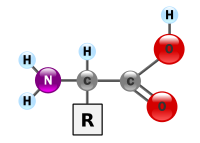
Photo from wikipedia
BACKGROUND Accurate assessment of dietary intake continues to challenge researchers, especially in field, or non-laboratory settings. OBJECTIVE In this study, digital food photography (DFP) methodology was used to assess nutritional… Click to show full abstract
BACKGROUND Accurate assessment of dietary intake continues to challenge researchers, especially in field, or non-laboratory settings. OBJECTIVE In this study, digital food photography (DFP) methodology was used to assess nutritional intake (NI) of Soldiers participating in the US Army's Ranger Selection and Assessment Program (RASP). METHODS During this high-intensity six-week course, Soldiers complete simulated operational missions, perform various military tasks, and importantly, eating time is severely limited. Therefore, this study provided an opportunity to evaluate the utility of DFP methods for accurate assessment of energy balance in conditions where consumption of large numbers of subjects must be completed in a very short periods of time (≤20 min). NI of 131 male, enlisted Soldiers (21 ± 4 years, 178±7 cm, and 78±8 kg) enrolled in the RASP course was assessed in their garrison dining facility using DFP utilizing visual estimation of pre- and post-meal photos of participant meals concurrently with photos of weighed, standardized portions. Total daily energy expenditure (TDEE) was assessed using doubly-labeled water (2H218O) in a sub-group of 19 volunteers. RESULTS During the study, data loss (i.e., missing meal photos) was less than 5% per meal, and during the visual estimation process discrepancies in food identification averaged less than 10% per meal, while approximately a third of serving size estimations required a third party adjudication prior to finalization and calculation NI. CONCLUSIONS We conclude that the use of DFP allows an adequately reliable approach for quantifying NI in real-world scenarios involving large numbers of participants who must be assessed very rapidly, and researchers must have a small footprint.
Journal Title: Appetite
Year Published: 2017
Link to full text (if available)
Share on Social Media: Sign Up to like & get
recommendations!